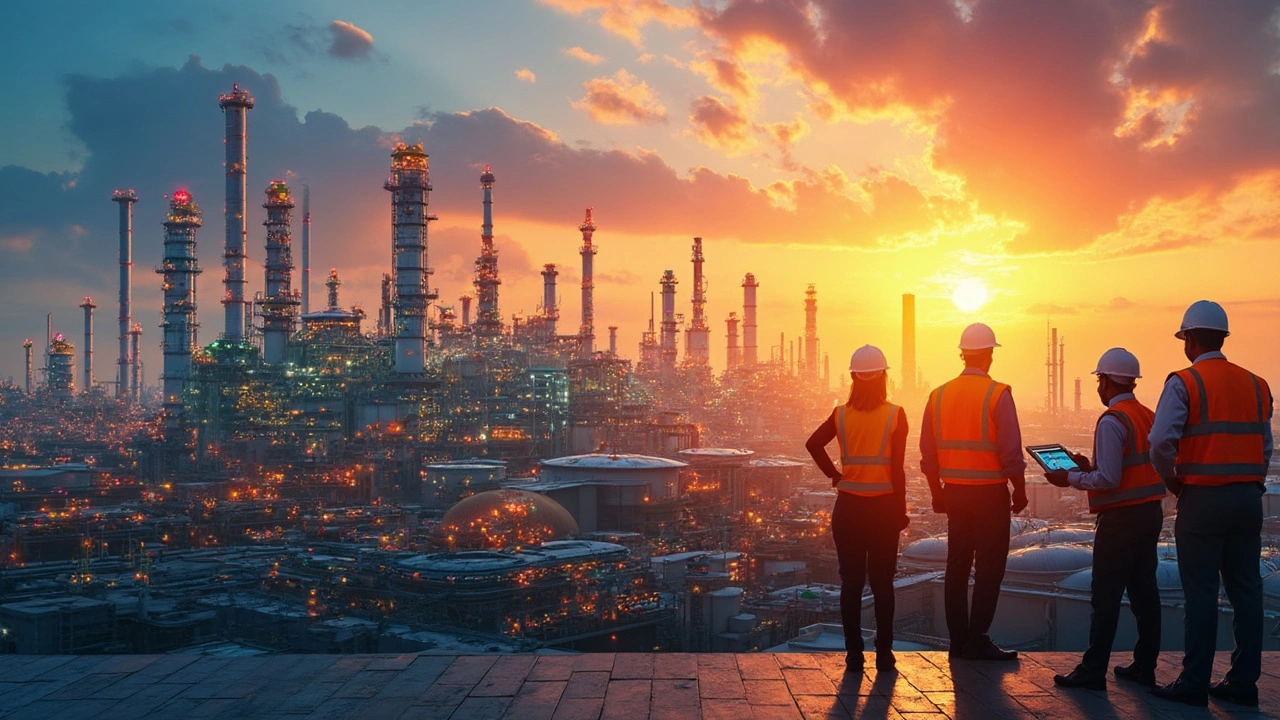Indian Chemical Industry: What’s Driving the Boom?
India’s chemical sector is buzzing with activity. From fertilizers that feed millions to specialty polymers that end up in smartphones, the industry touches almost every part of our daily lives. If you’re wondering why this space is suddenly on everybody’s radar, the answer lies in a mix of cheap labor, steady raw‑material supply, and strong government push for “Make in India”.
Key Segments Making Noise
First off, bulk chemicals still dominate the market. These include basic acids, alkalis, and petro‑based products that power plants, textiles, and pharma plants across the country. Specialty chemicals – think dyes, adhesives, and high‑performance polymers – are growing faster, thanks to rising demand from automotive and electronics manufacturers. Then there’s agro‑chemicals: India is the world’s second‑largest fertilizer consumer, and local producers are stepping up to cut import reliance.
One surprising player is the pharmaceutical chemicals niche. API (Active Pharmaceutical Ingredient) manufacturers are expanding capacity to meet global demand, especially after the COVID‑19 pandemic highlighted supply‑chain risks. This ties directly to another tag post about Indian pharma manufacturing and its outlook to 2025.
Growth Drivers and Real‑World Challenges
Why is the sector taking off? Cheap labor is a given, but the real catalyst is policy. The government’s Chemical Industry Vision 2025 promises tax incentives, faster clearances, and a focus on green chemistry. Coupled with a growing domestic market – India’s middle class is set to hit 600 million by 2030 – manufacturers have a built‑in customer base.
However, it’s not all smooth sailing. Environmental regulations are tightening, and many older plants are struggling to meet new emission standards. Access to high‑quality raw material is another pain point; imports of certain petro‑chemicals still outpace local production, driving up costs. Skilled labor is also scarce – while there are plenty of workers, engineers who understand advanced process control are in short supply.
To stay competitive, companies are investing in automation and digital twins. These tools help monitor temperature, pressure, and reaction rates in real time, cutting waste and boosting yields. The shift toward circular economy models is also gaining traction. For example, some firms are turning plastic waste into feedstock for new polymers, aligning profit goals with sustainability.
Looking ahead, the next five years could see India leapfrog into the top three global chemical producers. Export potential is huge, especially to the Middle East and Africa, where demand for fertilizers and specialty chemicals is rising fast. Those who adopt clean technologies early will likely capture the most market share.
So, if you’re thinking about entering the Indian chemical space, focus on three things: comply with emerging environmental norms, invest in skilled talent, and leverage government incentives. Combine those with a clear understanding of which sub‑segment – bulk, specialty, or pharma chemicals – fits your expertise, and you’ll have a solid roadmap to success.

Indian Chemical Industry Size: How Big Is It Really?
Want to know how big the Indian chemical industry is? This article breaks down its actual size, growth rate, and global impact. Get real numbers, see which segments matter most, and find smart tips for businesses and job-seekers. Understand why chemical manufacturers in India are making global waves right now.
